Best 15 Digital Publishing Platforms in 2025 (Compared)
As children, many of our homes were filled with all kinds of publications, from magazines and books to flyers and restaurant menus stuck to the fridge with cute little magnets. However, over time, these publications slowly turned digital. The magazines we once bought every month turned into annual subscriptions for e-magazines, and the books we used to pick up at the bookstore are now ebooks on our tablets. Even when we go to a restaurant, they no longer hand us printed menus—they ask us to scan a QR code instead.
This shift from print to digital has been transformative, not only for us as readers but also for the creators behind these publications. Today, writers, educators, and businesses alike are embracing digital publishing platforms to reach their audiences. For example, the number of digital subscribers of the New York Times has reached 10.2 million in 2024. To keep up with this change and effectively reach their audiences, writers, educators, and businesses have embraced digital publishing platforms.
If you find yourself in a similar situation where you need to switch to a digital publishing platform but aren’t sure which to use, then you’ve come to the right place. In this article, we’ll cover everything you need to know about these platforms and recommend the best one to use in 2025.

What Is a Digital Publishing Platform?
A digital publishing platform refers to software that enables the creation, editing, designing, and distribution of content. This content can be ebooks, flipbooks, e-magazines, brochures, or educational materials.
While they provide various features, digital publishing platforms generally include essential tools for designing and managing layouts, adding multimedia and interactive elements, and branding your content. Additionally, they allow you to export your work in different formats for sharing on websites, social media, and mobile apps.
What to Look for in a Digital Publishing Platform
Since digital content is taking over the publishing scene, the number of digital publishing tools available has increased significantly. To help you select one that meets your needs, we’ve compiled a list of the key features you need to consider:
- Ease of Use: Look for a user-friendly interface that simplifies the content creation and publishing process. For example, it can have ready-to-use templates or customizable layouts.
- Cost: While there are some free publishing tools out there, they can be limited in terms of features. So make sure the tool of your choice meets your budget.
- Customization: Choose a tool that allows you to customize your content with your brand colors and logos to increase your brand awareness.
- Payment gateways: If you’re planning on charging your readers for consuming your content, then make sure to choose a tool that help you do that.
- Analytics: It can be useful if the tool you choose helps you track how readers interact with your content.
What Are the Types of Digital Publishing Platforms?
Digital publishing platforms can be categorized based on the type of content they support and the features they offer. Each platform is tailored to meet specific publishing needs, whether for interactive or web-based content. Understanding the main types of digital publishing platforms can help you choose the right one for your project:
- Interactive Content Publishing Platforms: Creating interactive content can engage your audience and help make the reading experience more captivating, and this type of platform can help you do just that. What’s more, you can publish this content on their platform or your website.
- Digital Self-Publishing Platforms: While these platforms don’t help you create content, they allow you to publish and monetize it and reach your target audience.
- Content Management Systems (CMS): If you are planning to mainly publish articles or blog posts, then CMS (also known as online publishing platforms) is the way to go.
| Type of Platform | Primary Purpose | Features |
|---|---|---|
| Interactive Content Publishing Platforms | Create and publish engaging, interactive digital content. | Interactivity, social media sharing, cloud publishing, and different export formats. |
| Digital Self-Publishing Platforms | Publish and distribute ebooks or print books. | Formatting tools, print-on-demand services, multi-channel distribution, and marketing tools. |
| Content Management Systems (CMS) | Manage and publish web-based content, such as blog posts and articles. | Website management, blog creation, customizable themes, and plugins. |
Best Interactive Content Publishing Software
Since content is king nowadays, finding the right tool to create your content is key to success. Equally important is keeping your audience engaged, and that’s where interactive content creation tools shine. Beyond just adding text, these tools enable you to incorporate various elements that capture your readers’ attention and keep them hooked. Once you are done with the creation process, these tools allow you to publish this content on their clouds.
To help you choose the right software for your needs, we’ll discuss the top six content creation tools in today’s market, with their features and prices.
1. Kotobee

As an award-winning authoring tool, Kotobee Author allows you to create all types of interactive content, from ebooks to digital magazines and learning materials. For example, you can add mini-apps, games, quizzes, or pop-up messages to make your content more engaging. It also has an AI tool that facilitates the content creation process for you by generating text, images, and questions.
What makes Kotobee truly unique is that it offers complete digital publishing solutions for both individual creators as well as businesses; after using Kotobee Author to create interactive content, you can host it on Kotobee Cloud, share it on Kotobee Library, or sell it on Kotobee Books.

- Main features:
- User-friendly interface
- Multiple export options (including PDF, EPUB, and web and mobile apps)
- Cloud storage and syncing
- Custom branding options
- Easy publishing and distribution
- Team collaboration tools
- Pricing: Kotobee offers a free plan with many advanced features. The paid plans start from $150 for the ebook creation tool, and as little as $10 for the hosting service. If you are planning on publishing your own customized library, then the plans start from $100.
2. Issuu

This widely used digital publishing platform allows you to create, share, and distribute interactive digital publications, such as magazines, catalogs, and brochures. With its user-friendly interface and powerful distribution tools, Issuu has become a favorite among businesses, marketers, and independent publishers looking to reach a broader audience. Once created and published, your content can be accessed through Issuu’s web-based viewer, or you can embed it on your website.
- Main features
- Analytics and performance tracking
- Customizable branding options
- Social media sharing tools
- SEO optimization features
- Integration with various content management systems
- Pricing: Issuu offers various pricing options: the Free Plan has basic features, the Starter Plan is $19/month, and the Unlimited Plan is around $269/month.
3. Flipsnack

Flipsnack is an online publishing tool that allows users to create and share interactive digital flipbooks. With its easy-to-use interface, users can upload PDFs or design publications from scratch using a drag-and-drop editor. It’s also super secure, with GDPR compliance built into the core functionality of the software.
- Main features
- Drag-and-drop design studio
- Excellent security features
- Great sharing options
- Engaging page flip effects
- Impressive templates library
- Built-in branding options
- Pricing: Flipsnack’s pricing structure starts at $35 a month for a starter plan to $109 for a business plan. Enterprise plans can also be purchased, but you’ll need to contact the sales team directly to talk shop.
4. Magloft

MagLoft is a digital publishing platform designed to help creators and publishers produce mobile-optimized digital magazines and apps. It focuses on simplifying the creation process, making it easy to add interactive elements and publish directly to the web or mobile app stores. From drag-and-drop design to powerful analytics, MagLoft provides a versatile toolkit for building and distributing responsive digital content that engages readers on any device.
Besides the content creation tools, MagLoft allows you to host this content on its cloud. Readers can then access it directly through a web-based app or a custom native app for iOS and Android, provided through MagLoft. This allows you to distribute content without needing your own hosting infrastructure.
- Main features:
- Mobile app and web app publishing
- Custom branding and design templates
- Subscription management tools
- Analytics and engagement tracking
- Push notifications for updates
- Pricing: MagLoft offers custom plans based on your needs. So if you would like to get a quote, make sure to contact their sales team.
5. FlipHTML5

As the name suggests, this downloadable software allows you to turn static PDFs, PPTs, and JPGs into interactive flipbooks. It is known for its ease of use and offering a variety of customization options, helping you create a more engaging reading experience. And to make the whole process easier for you, FlipHTML5 has an AI that can help you insert text or generate images. Moreover, it allows you to publish and host your content on its cloud.
- Main features:
- Editable templates
- Customization and branding
- AI text and image generation
- Responsive layouts
- Analytics tools
- Monetization options
- Pricing: While you can try the free plan FlipHTML5 offers with limited features, you can also invest in one of their paid plans. These plans start at $12.5/month and go up to $83.5/month.
6. Adobe InDesign

Used by content designers and publishers, this is a professional desktop publishing software that helps create visually rich layouts for digital and print media. With a wide range of customization and layout options, InDesign is ideal for creating magazines, interactive ebooks, brochures, and PDFs. It also allows you to publish this content online and protect it with a password.
Another advantage of InDesign is that it can be integrated with the rest of Adobe Creative Cloud suite. This allows you to incorporate elements from Photoshop, Illustrator, and other Adobe tools, which in turn facilitates the process of producing professional publications.
- Main features:
- Advanced typography and text styling
- Supports EPUB, PDF, HTML, and interactive formats
- Customizable templates and styles
- Team collaboration tools
- Analytics integration
- Flexible and customizable layouts
- Pricing: Adobe InDesign is available through a subscription to Adobe Creative Cloud, with pricing starting at $22.99/month for the standalone app. For access to the full suite of Adobe tools, the Creative Cloud All Apps Plan is priced at $59.99/month, providing InDesign alongside other applications like Photoshop and Illustrator.
| Platform | Main Features | Best For | Pricing |
|---|---|---|---|
| Kotobee Author | User-friendly interface Multiple export options Analytics dashboard Custom branding options Templates library | Interactive ebooks Digital Magazines Brochures Educational content Courses | Free plan available Paid plans range from $150 to $2000 (one-time payment) |
| Issuu | Analytics and performance tracking Custom branding SEO optimization Offline reading Rich media embedding | Digital magazines Catalogs Brochures | Free plan available Paid plans from: $19/month (Starter) to $269/month (Unlimited) |
| Flipsnack | Drag-and-drop design studio Engaging page flip effects Templates library Built-in branding options | Interactive flipbooks Catalogs Digital magazines | Paid plans from: $35/month (Starter) to $109/month (Business) |
| MagLoft | Mobile and web app publishing Custom branding Subscription tools Analytics tracking | Mobile magazines Interactive digital apps | Custom pricing; Contact sales for a quote |
| FlipHTML5 | Editable templates AI text/image generation Responsive design Analytics tracking Monetization options | Interactive flipbooks | Free plan with limited features Paid plans from: $12.5/month to $83.5/month |
| Adobe InDesign | Team collaboration Supports EPUB, PDF, HTML Extensive Adobe integration | Magazines Catalogs Brochures PDFs | $22.99/month for standalone app $50.99/month for Creative Cloud All Apps Plan |
Best Digital Self-Publishing Platforms
The self-publishing world offers a wide variety of platforms and services, each with its own purpose and unique features. Below, you’ll find a list of some of the top free publishing websites available today, along with details on their features, pricing, and any other services they offer.
1. Kotobee Books
As one of the relatively new free ebook publishing platforms, Kotobee Books is a self-publishing platform that allows you to keep 100% of book royalties! Moreover, Kotobee Books’ publishing process is very simple and straightforward; plus, your book will be accessible to thousands of readers instantly once you hit the “Publish” button.
- Supported File Formats: Kotobee Books currently only accepts EPUB files.
- Royalties: Authors receive 100% of the royalties on their ebooks, for a limited time. Kotobee Books does not charge any commissions.
- Other Services: Kotobee offers other services as well, such as ebook consultation, design, conversion, and scripting.
2. Amazon Kindle Direct Publishing (KDP)
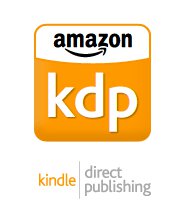
This is probably the first digital publishing platform that comes to the mind of many aspiring writers. According to an Enders Analysis, about 40% of the best-selling books on Amazon are self-published. That is why publishing on this platform can be great for new authors hoping to get some exposure and reach a wider audience.
If you are still not sure whether to go for KDP or not, check our article on the pros and cons of self-publishing on Amazon to make an informed decision.
- Supported File Formats: Amazon KDP accepts the following formats: .doc, .docx, Kindle Package Format (KPF), EPUB, and MOBI.
- Royalties: Authors receive 70% royalties for all books priced between $2.99 and $9.99, and 35% for books that fall outside this price range. These royalty rates are applicable in most territories, with very few exceptions.
- Other Services: One of the great things about KDP is that it offers other services besides publishing, such as print-on-demand, cover design, and advertising. However, you will have to pay for those services.
3. Apple Books
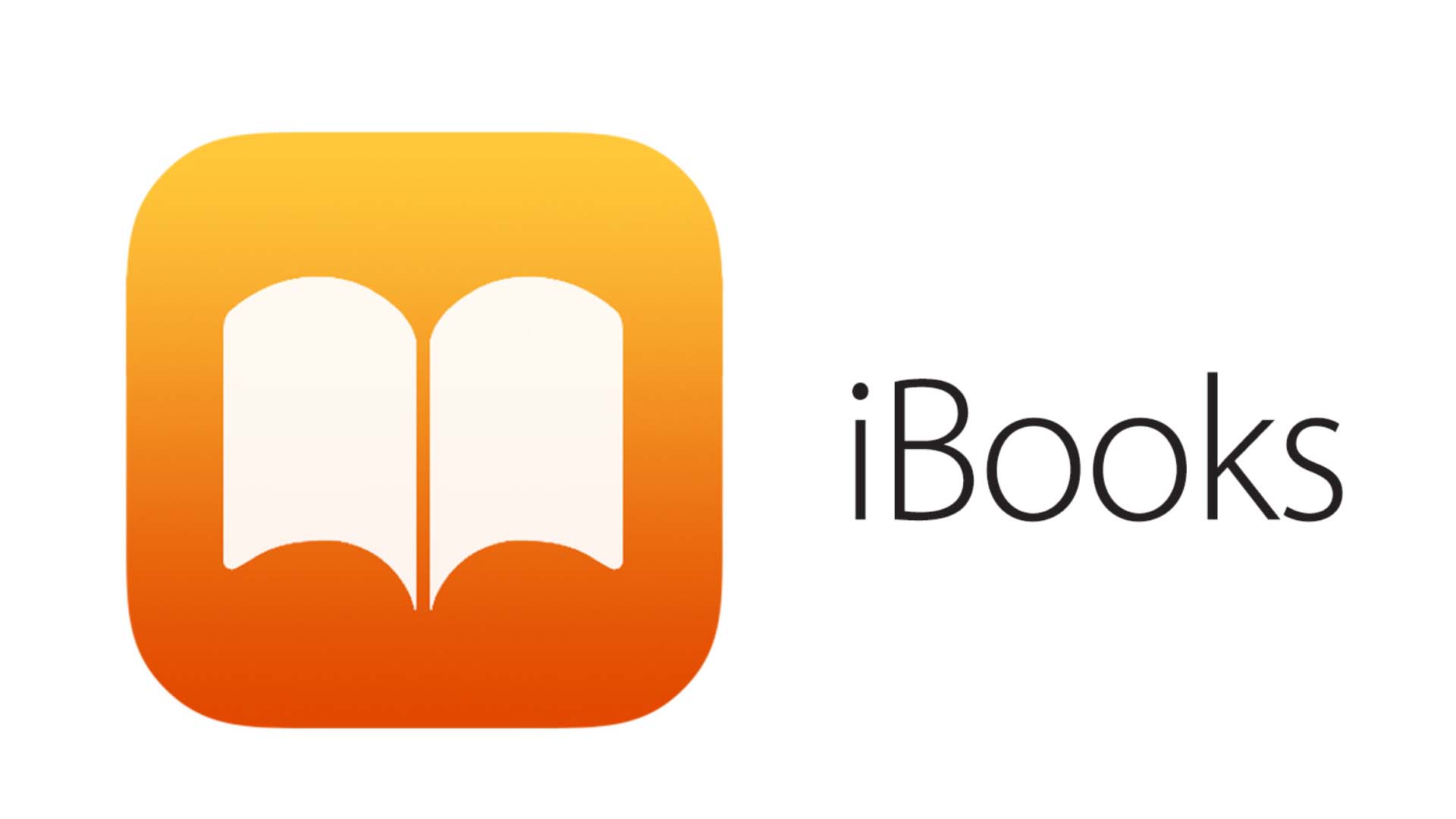
Another major player in the self-publishing field is Apple Books. It recently became the second-largest ebook online retailer, as it directly markets to Mac users, who take up around 20% of the entire OS market.
- Supported File Formats: The formats Apple Books supports include EPUB and Multi-Touch books that are created in Apple Pages.
- Royalties: Apple Books offers the authors 70% royalties, regardless of the price of their books.
- Other Services: One of the special features of Apple Books is that the author can use their DBA or pen name as the seller for their books. Moreover, authors can use up to 250 promo codes to promote their books, and they can also suggest their book for editorial placement to be featured on the website for free.
4. Barnes & Noble Press (B&N Press)
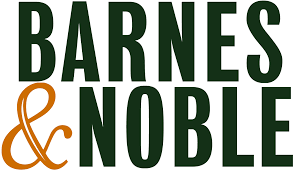
This is probably the third biggest self-publishing platform in the US. The books that are published through Barnes & Noble Press retail only in their online and physical bookstores. They are available in 12 different regions, including—but not limited to—the U.K., Canada, Australia, New Zealand, France, Italy, and Germany.
- Supported File Formats: The file formats of ebooks in B&N Press can be .doc, .docx, .txt, HTML, or EPUB.
- Royalties: B&N updated their royalties rates for self-published ebooks to be a flat 70% and accelerated the payment to 30 days after purchase, instead of 60.
- Other Services: B&N Press has partnered with a number of service providers, such as Reedsy, which offers editorial services, 99designs, which offers designing services, and Inkubate, which provides marketing services. They also offer print-on-demand services and allow for preorders on both ebooks and print books.
5. Kobo Writing Life

This Canadian-based company is one of the largest ebook stores out there, with more than 6 million titles available in 77 languages. Kobo is a great option for self-publishing as it has a market in 16 countries outside the US.
One of the best things about this platform is that it doesn’t require exclusivity. This means that you can benefit from publishing on it and on many other platforms simultaneously. Other benefits also include setting your own prices and running your own promotions.
- Supported File Formats: The file formats supported on Kobo are .doc, .docx, ODT, EPUB, and MOBI.
- Royalties: Similarly to Amazon KDP’s royalties, Kobo offers self-published authors 70% on books priced more than $2.99, and 45% for books priced below that price point.
- Other Services: Kobo offers a couple of services for a fee, such as promoting books. It has also partnered with a number of platforms that offer book formatting and cover design.
Best Online Publishing Platforms and CMSs
Online publishing platforms, or content management systems (CMSs), provide tools for designing web pages, organizing content, and controlling layout. They also often include features for SEO optimization, user management, and analytics. Selecting one of the many available platforms will depend on your needs; so before making any decisions, check out the list below.
1. WordPress
One of the most popular CMSs out there, WordPress powers over 40% of the websites available today. What makes it stand out is how versatile it is, especially with the thousands of plugins and themes available.
Moreover, it provides block-like elements for easy content arrangement, allowing you to design layouts as you like. That’s why many creators, especially beginners, prefer using this platform to customize their websites and online presence.
- Key features:
- Extensive library of plugins and themes
- SEO tools
- Highly customizable layouts
- Large community and support resources
- Easy optimization for mobile
- Social media integration
- eCommerce support
- Pricing: Plans start from $4/month for basic personal use, with business features available starting from $25/month.
2. Squarespace

Just like WordPress, Squarespace can be extremely versatile when it comes to creating and publishing content online. It has pre-built layouts and a built-in commenting system that allows you to connect with your platform visitors. And as a plus, it allows you to create online stores to sell different products or services.
Another great advantage of using Squarespace is that, with a single subscription, you get a domain name and hosting service. You also gain access to countless website templates to easily customize your platform.
- Features:
- Professionally-designed templates
- Built-in eCommerce and blogging tools
- Marketing and SEO tools
- Drag-and-drop editor
- Pricing: Squarespace offers several plans for various usages, their lowest plan (Personal) starts at $16/month when paid annually, and their highest one (Advance Commerce) goes up to $72/month.
3. Adobe Experience Manager (AEM)

While the two previous platforms could be used by both individuals and companies, Adobe Experience Manager is better suited for enterprises. It is essentially a blind between a CMS and a DAM (digital asset management), to help businesses create and distribute content across various channels.
The best thing about this platform is that it integrates with Adobe’s suite of tools, offering powerful features for digital asset management, content delivery, and analytics. Using AEM, you can build and publish your own websites. You can also create branded apps as well as various interactive content.
- Features:
- A centralized dashboard for all projects
- Editable templates
- Responsive layouts
- Cloud services
- Visual media conversion
- Pricing: Adobe Experience Manager offers custom-priced packages based on your business requirements.
4. Drupal
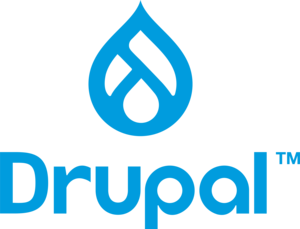
Drupal is a powerful, open-source CMS known for its flexibility, scalability, and ability to handle complex data-driven platforms. It allows you to build highly customized sites to publish your content on, making it ideal for enterprises, government agencies, educational institutions, and developers with advanced needs.
While Drupal has a steeper learning curve than other CMSs, it’s highly customizable and offers nearly unlimited potential for custom content types, layouts, and features.
- Features:
- Flexible content types and layouts
- Built-in multilingual support
- Mobile-responsive themes
- Strong security features
- SEO and marketing tools
- Scalable for high traffic
- Pricing: Drupal is free to use, but you might need to budget for hosting, domain registration, and any premium modules or themes. Hosting typically ranges from $5–$40 per month for standard plans and can go higher for enterprise-level hosting.
5. Joomla
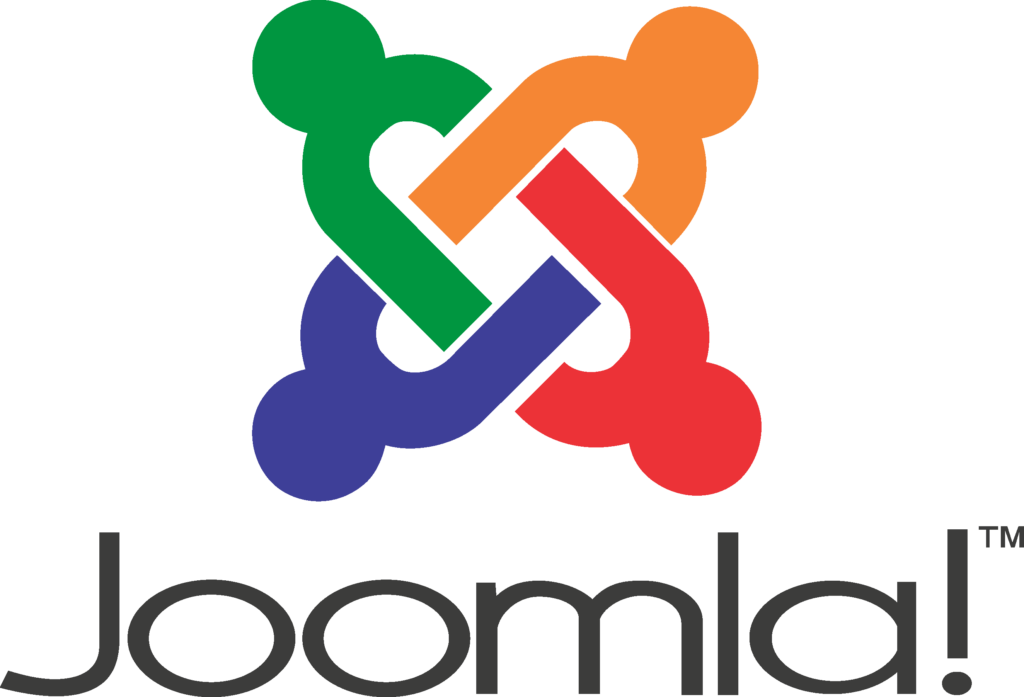
Joomla is a popular, open-source CMS known for its flexibility and power in creating a wide range of platforms, from simple blogs to complex corporate portals. It combines ease of use with advanced features, making it an ideal solution for users with various levels of technical expertise.
With thousands of available extensions and a vibrant community, Joomla enables users to expand functionality and create highly customized websites tailored to their specific needs. Whether you’re looking to build a simple blog or an internal portal for your business, this platform offers the tools and flexibility to bring your vision to life.
- Features:
- Flexible content organization
- Built-in multilingual support
- Advanced user access control
- Customizable, responsive templates
- SEO-friendly tools
- Strong community support
- Pricing: The open-source setup of Joomla means users don’t pay for the main CMS itself, though you might want to invest in hosting, premium templates, and specialized extensions. Basic Joomla sites may cost as little as $100–$200 annually, while more complex sites with premium features can reach $300–$500 or more per year.
| Platform | Main Features | Pricing |
|---|---|---|
| WordPress | Extensive plugins and themes SEO-friendly and customizable Mobile-optimized eCommerce support | $4/month for basic plan $25/month for business features |
| Squarespace | Professionally-designed templates Built-in eCommerce SEO tools Drag-and-drop editor | $16/month (Personal) $72/month (Advanced Commerce) |
| Adobe Experience Manager | Centralized project dashboard Editable templates Adobe suite integration Cloud service | Custom pricing based on business needs |
| Drupal | Flexible content types Multilingual support SEO tools Scalable for high-traffic | Free to use Hosting costs $5–$40/month; Enterprise hosting may be higher |
| Joomla | Extensive extensions Multilingual support User access control SEO tools | Free CMS; additional costs for hosting and premium extensions ($100–$500/year) |
Final Thoughts
Choosing the right platform to create and publish your work is key to reaching your audience effectively. Begin by defining your goals and pinpointing the features that will bring your content to life, then select the platform that best aligns with these needs. Remember that each platform offers unique strengths, so focus on one that not only meets your technical requirements but also supports your creative vision.
.
Read More
Convert a Word Document to EPUB or MOBI in Minutes
9 Ebook Cover Tips for Beginners
Top Seven Sites for Ebook Templates

















Book review blogs
June 10, 2023wow all the informations are very nice and useful thanks for sahring with us
Kotobee
September 10, 2023Thank you for your positive feedback and kind words! We’re delighted to hear that you found the information in our article helpful. 🙂
Nihal Edirisinghe
October 5, 2023Brilliant work. Found it very useful
All the information an aspiring Publisher needs!
Thank You
Kotobee
November 5, 2023Thanks a lot for your comment, Nihal! We are glad you found this article useful. 🙂
Thomas Holladay
October 23, 2023Great article. It cleared up the differences between vanity presses, of which I was a victim, and hybrid presses, one of which has made a pitch on my latest novel. I have self-published with Draft2Digital and Amazon KDP. Both are easy to work with and I have free distribution wherever books are sold online.
Kotobee
November 6, 2023Hi Thomas!
We really appreciate your positive feedback on our article. 🙂
It’s unfortunate to hear about your experience with a vanity press, but it’s great to know that you’ve found success with self-publishing platforms like Draft2Digital and Amazon KDP. Both platforms indeed offer user-friendly interfaces and wide distribution options, making it easier for authors to reach readers globally.
Best of luck with your writing journey!
Purav Jha
December 26, 2023Several platforms like Notion Press, Pothi, Shabd.in and Amazon KDP allow you to upload your manuscript, design the cover, set the price, and distribute your book digitally and in print.
Kotobee
December 27, 2023Thank you, Purav, for your comment! It’s great that you highlighted platforms like Notion Press, Pothi, Shabd.in, and Amazon KDP. These indeed are excellent choices for authors to publish and distribute their work seamlessly. Each platform offers unique features, and it’s wonderful to see such a variety of options for aspiring authors.
Akuh Bernard
February 11, 2024I HAVE NOT BEEN LUCKY WITH AMAZON KDP. FOR 2 WEEK I CANT LOG IN SIGN UP.INTERNAL ERROR IS THEIR EXCUSE!
Kotobee
April 21, 2024Hi Akuh!
We are sorry to hear about the login issue you’re facing with Amazon KDP. We understand how frustrating it can be when technical issues prevent you from accessing your Amazon KDP account. We recommend contacting Amazon support for assistance.
Sabine
June 27, 2024Thanks for this great overview. I am just missing the information on which Plattform I can publish an interactive ebook with boofwidgets? I know with Amazon kindle it is not possible but how it is with Apple Books and the others…?
Thanks in advance!
Greetings Sabine
Kotobee
August 6, 2024Hi Sabine!
You can easily publish your interactive ebook with the book widgets on Kotobee Books. Not only will you find the publishing process easy and quick, but you’ll also get 100% royalties for every sale. 🙂
nighat
August 11, 2025nice platform for writers
nighatnaeem
August 11, 2025Can you please help and guide me, how to publish articles? I am a medical blogger, just a beginner, and need some help regarding publishing my content on different platforms.You can visit my website and guide me accordingly, thanks
Kotobee
August 21, 2025Hi there, that’s a great question and congrats on starting your medical blog! For beginners, a simple way to publish articles is through platforms like Medium, WordPress, or LinkedIn, which are free and have large audiences. You might also share your posts on social media or submit guest articles to established medical/health blogs to reach more readers. Over time, as you grow your content, you could even consider compiling your articles into an ebook or guide for your audience.
Good luck!